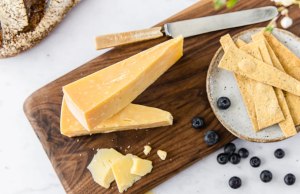UPM Raflatac has released its new Packaging Recyclability Guide, designed to help FMCG stakeholders across the packaging value chain navigate the complexities of packaging design and recyclability.
The new guide, which is available as a free e-book on the company’s website, offers practical information on the guidelines, definitions and criteria to help make informed label choices that will enhance recyclability.
With the emergence of the EU’s new Packaging and Packaging Waste Regulation (PPWR) and the focus on packaging circularity at this present time, the company says that mastering the intricacies of packaging sustainability and fortifying packaging solutions for the future has never been more essential.
Although many companies have already made voluntary commitments to targets, such as using 100 per cent recyclable, reusable, or compostable packaging, deciding the best way to achieve these goals can be challenging.
UPM Raflatac’s new guide focuses on the topic of packaging recyclability and makes it more accessible to label printers, brand owners and packaging designers alike.
The guide shows how selecting the right label material is pivotal in elevating the circularity of a packaging. It also explains how by designing for recyclability, businesses can potentially avoid or reduce Extended Producer Responsibility (EPR) fees, making the switch to recyclable materials an even more attractive prospect.

“In today’s market, as legislation and consumer demand both continue to drive a shift toward more recyclable options, companies need to make more informed labelling and packaging decisions,” said Suvi Rasa, manager of sustainability at UPM Raflatac.
“That is why we are excited to be launching this new guide. It has been written with the sole purpose of helping stakeholders in the packaging design process realise the impact of label choice on the end product’s circularity by providing comprehensive and practical advice.”
The UPM Raflatac Packaging Recyclability Guide details the SmartCircle label materials that are recycling-compatible in different recycling streams and offers advice on how to make decisions that align with the current guidelines.
It includes an overview of EPR schemes as a driver of packaging circularity; what it means to be recyclable; and how to enhance recyclability of PET, HDPE and PP, PE films, fibre-based, glass and aluminium packaging through label choice, making informed decisions using Life Cycle Assessment (LCA) and how label waste can be recycled.
To access the new Packaging Recyclability Guide, click here.





